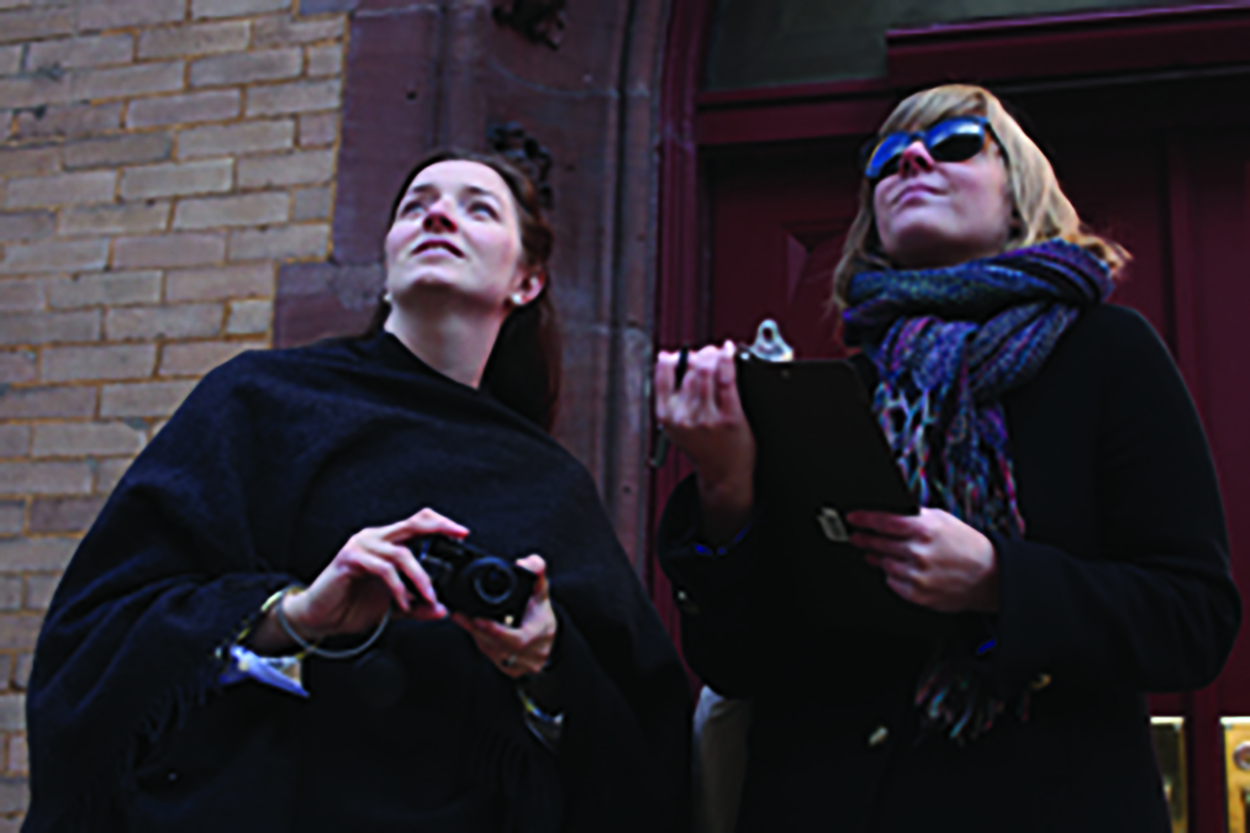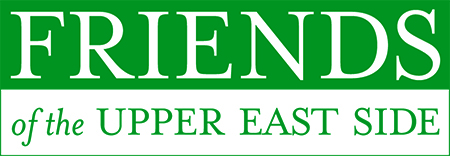by Paul Biscegli
If you live in Yorkville, don’t be surprised if you see Tara Kelly or one of her volunteers standing on the street, notepad in hand, staring at your building.
“As soon as people know you aren’t a developer, they usually don’t mind,” Kelly said. “I tell them I’m from Friends, and they say, ‘Oh, I love Friends!’”
Kelly is the executive director of Friends of the Upper East Side Historic Districts, a nonprofit on Lexington Avenue whose mission is to keep the Upper East Side’s—and, right now, specifically Yorkville’s—diverse history intact.
“What we aim to preserve is any place that has a distinct sense of place,” Kelly explained. The organization, which was founded in 1982, primarily goes about preservation through architecture. The Upper East Side’s buildings have been built, rebuilt, torn down and altered for centuries, so Friends’ job is to sift through miles of architectural variety along the city’s streets to find what is worth holding on to.
To do so, Friends performs “cultural resources surveys,” which is a fancy term for walking through neighborhoods and taking notes on buildings—all buildings. In Yorkville, the organization is currently cataloguing every lot in the neighborhood. Since 2010, the project has been recruiting volunteers throughout the Upper East Side to fill out survey forms for every building on a block, accounting for things like each building’s style, materials, window type, similarity to others in the neighborhood and overall perceived historical value.
Jackie Peu-Duvallon, a historic preservation consultant who lives at East 89th Street and Madison Avenue, has volunteered with Friends for about a year. She joined Kelly last week to survey East 83rd Street from Third to Second avenues.
“I want to maintain a sense of place between what my husband [who was born on the Upper East Side] experienced and what my son will experience,” Peu-Duvallon said of her motivation for participating in the survey. “As a resident, it becomes disconcerting when you see things like Second Avenue becoming a canyon of glass towers. You wonder, is this the neighborhood that people used to know and love, or is this becoming something else now? Are we losing character in giving up historic buildings that may have gone unrecognized?”
Peu-Duvallon and Kelly overlooked no door, step or windowpane as they surveyed each building along East 83rd Street, chatting architecture, snapping pictures and cracking jokes about a couple of less-than-sound aesthetic choices. Kelly explained that Friends seeks out buildings of individual cultural importance—like St. Elizabeth of Hungary, an attractive old Catholic church on the block—and that contain details reflecting the neighborhood’s overall historic character.
Friends ultimately does not decide what buildings are preserved, though. That is the job of the city’s Landmarks Preservation Commission, a governmental agency with the legal power to designate single structures or entire districts as historical landmarks. Roughly 30,000 buildings in New York City—about 3 percent of all buildings—are landmarked either individually or within historic districts.
Kelly wishes there were more. A significant part of Friends of the Upper East Side Historic Districts’ resources are devoted to identifying and recommending landmarks worth of designation—an approval process which, according to Kelly, takes from three months to multiple years depending on feasibility and the commission’s interest in the proposed site—but Kelly says that her organization is also dedicated to exploring ways of teaching communities about their cultural landmarks when designation is not practical. If a neighborhood has historic door fronts, say, or interesting signage, Friends notes these details in their surveys, and may use them to create a photo exhibition on their website.
Kelly also noted that regardless of how many buildings are landmarked, her job will never be done. “The city is ever evolving,” she said. “Buildings built now are landmarks of the future. As long as there are new buildings, there will be landmarks to be designated.”

Jackie Peu-Duvallon, a historic preservation consultant, and Tara Kelly, Executive Director of Friends of the Upper East Side Historic Districts, check out buildings on East 83rd St.

